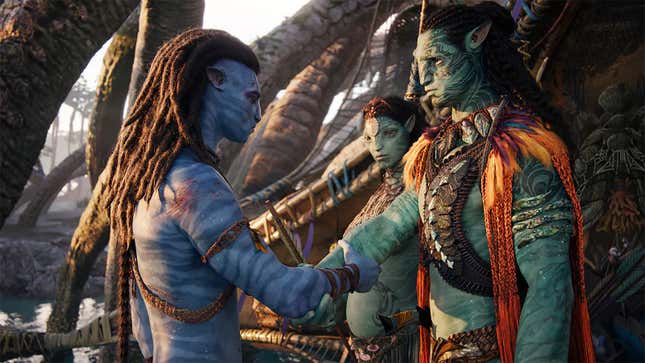‘Avatar: The Way of Water’ Is Mostly Just Vibes
After 13 years, we have something new and dumb and pretty to look at. Thanks, James Cameron!
EntertainmentMovies

“The way of water has no beginning and no end,” says a character in James Cameron’s long-awaited (I guess!) sequel to 2009’s Avatar. Conversely, Avatar: The Way of Water does have a beginning and an end, it just feels eternal. Clocking in at 3 hours and 12 minutes, Water is so immersive that it threatens to cease functioning like a movie and just take over as reality. At least it’s nice to look at.
As a follow-up to the highest-grossing movie of all time, one that was initially scheduled to be released eight years ago, Water feels like an assignment to anyone who cares about their pop-cultural literacy. The good news is that it’s an easy one. Water is an unchallenging cartoon for grownups and kids alike. Its plot is as slim as the long-torsoed body of a Na’vi and as clear as the water the central “reef people” characters swim in. It’s less an achievement in storytelling and more a marvel of world-building, a visual feast with mostly empty calories. Really, it’s just vibes, which feels both humble for perhaps the most expensive movie of all time (The Hollywood Reporter estimates its budget is between $350 million and $450 million), and kind of maddening given its cultural gravitational pull. This is it? This is it.
-

-

-

-

-

-

-

-

-

-

-

-

-

-

-

-

-

-

-

-

-

-

-

-

-

-

-

-

-

-

-

-

-

-

-

-

-

-

-

-








































